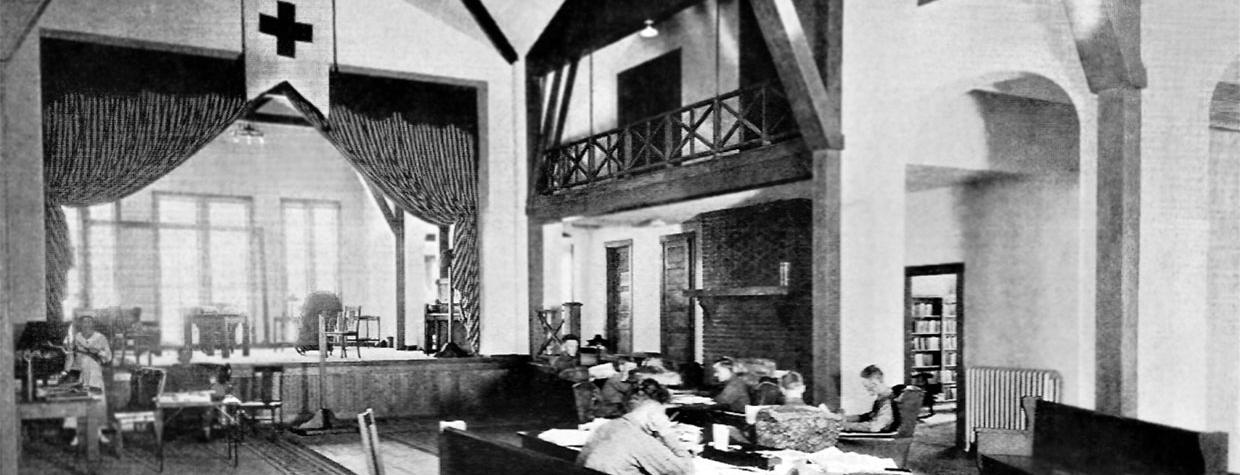With some 25 percent of returning soldiers facing “shell shock” after World War I, the U.S. embraced a new model of care, greatly expanding convalescent facilities for the sick and wounded — and the American Red Cross played a key role. “Back of all the physical problems still stands the mental one,” wrote Henry P. Davison, the organization’s War Council chairman. “Depression, discouragement, relaxation of hope … is the malady that requires most skillful medicine, and that if uncured may make all the drugs and surgery of no avail.”
To that end, the organization funded and operated more than 60 convalescent houses at military camps and hospitals across the country, including two in Arizona: at Fort Whipple, in Prescott, and at Camp Harry J. Jones, in Douglas. In these “Red Cross houses,” Davison wrote, a soldier could find “a big, cheerful place with couches and steamer chairs and sunshine … where the Library Association furnished him with the latest best-seller, where the magazines and newspapers were handy to restore his touch with American life.”
Chicago architect Charles E. Fox, whose firm specialized in luxury hotels and apartments, designed a standard plan that could be modified to meet local requirements, with a central artery and wings on either side forming a cross. Intended to feel homey, the great rooms in these facilities were furnished with comfortable chairs, writing tables and a fireplace. A solarium doubled as a stage where plays and concerts were performed. The wings housed pool tables and a library, while rooms upstairs hosted visiting family members.
Already in operation at Camp Harry J. Jones by the time the war ended, the Red Cross house there was “the scene of camp gaieties daily,” the organization’s field director reported in May 1919. Two months later, the post orchestra played at a simple dedication of the new Red Cross house at Fort Whipple. The wife of local politician Morris Goldwater made the Red Cross flag that flew over the building, and the next evening, more than 250 people attended the first performance held there — one that included a one-act play written by one of the patients.
Red Cross aides and hostesses published appeals for records and gifts, and they also organized holiday celebrations. In Prescott one year, patients enjoyed a partial re-enactment
of the Frontier Days rodeo.
As patient numbers dwindled, Red Cross houses closed. In the 1920s, those that remained were transferred to the U.S. Public Health Service; later, they became part of the Veterans Administration. Most of these buildings have since been demolished, but two repurposed Red Cross houses are still standing in Washington state.

